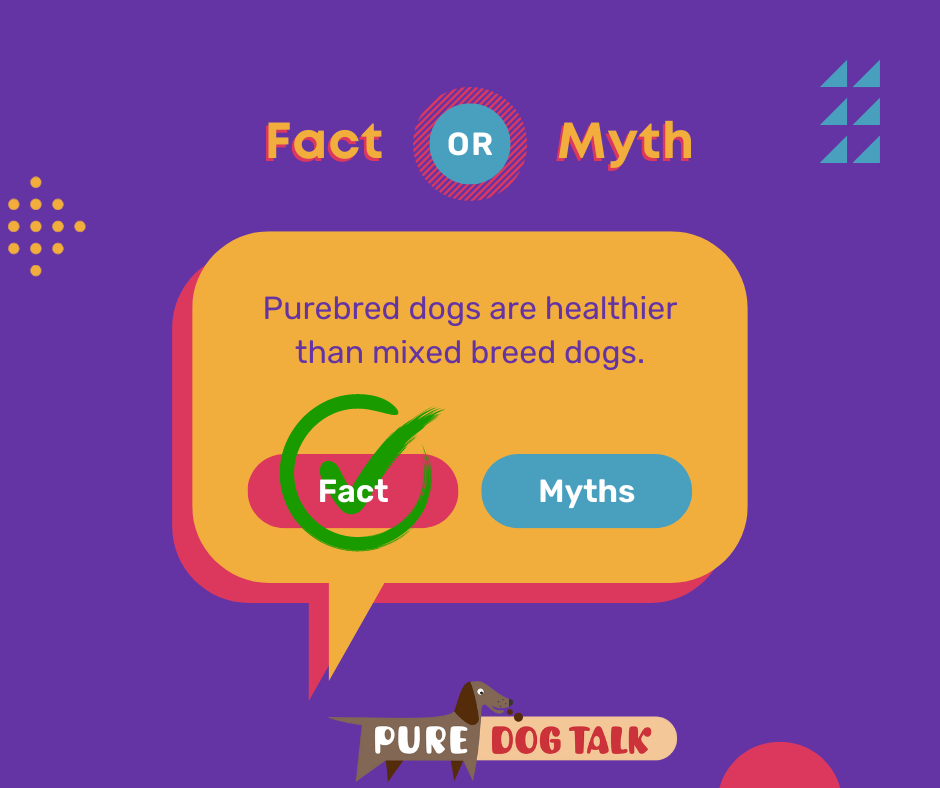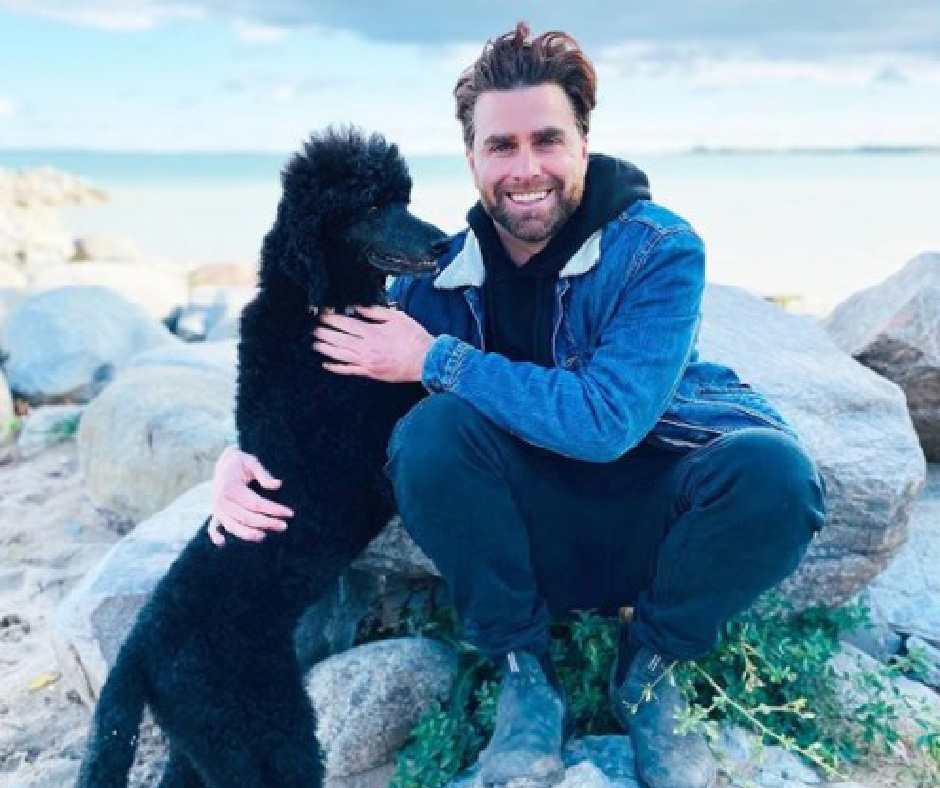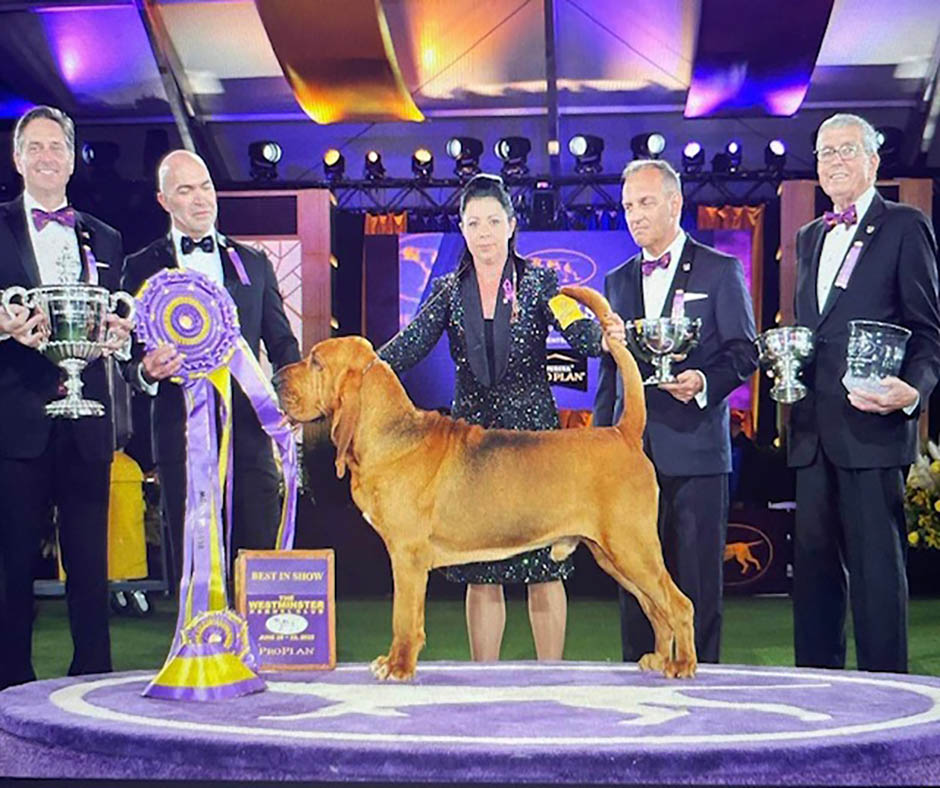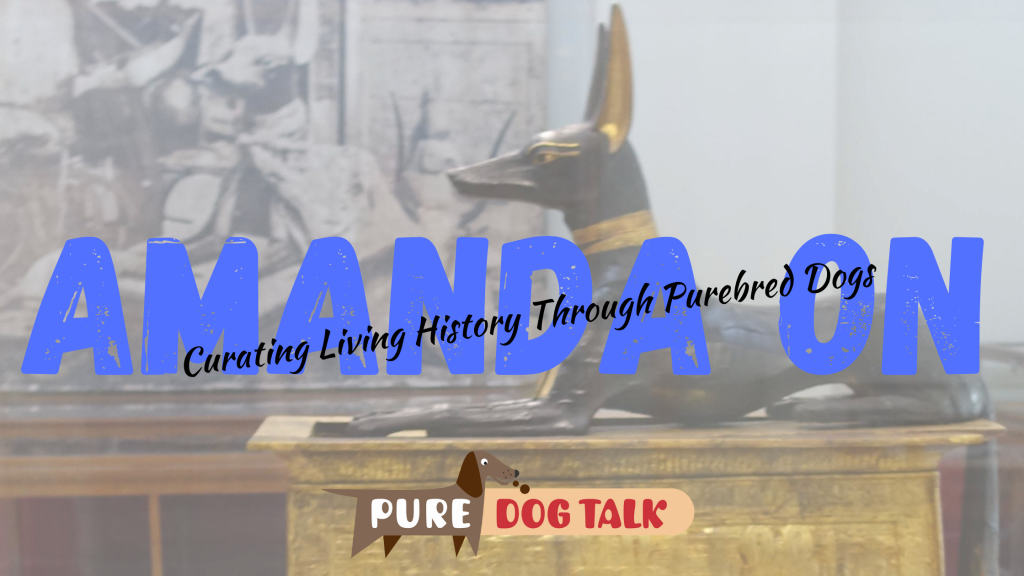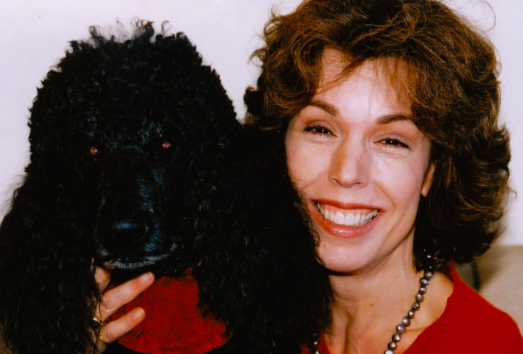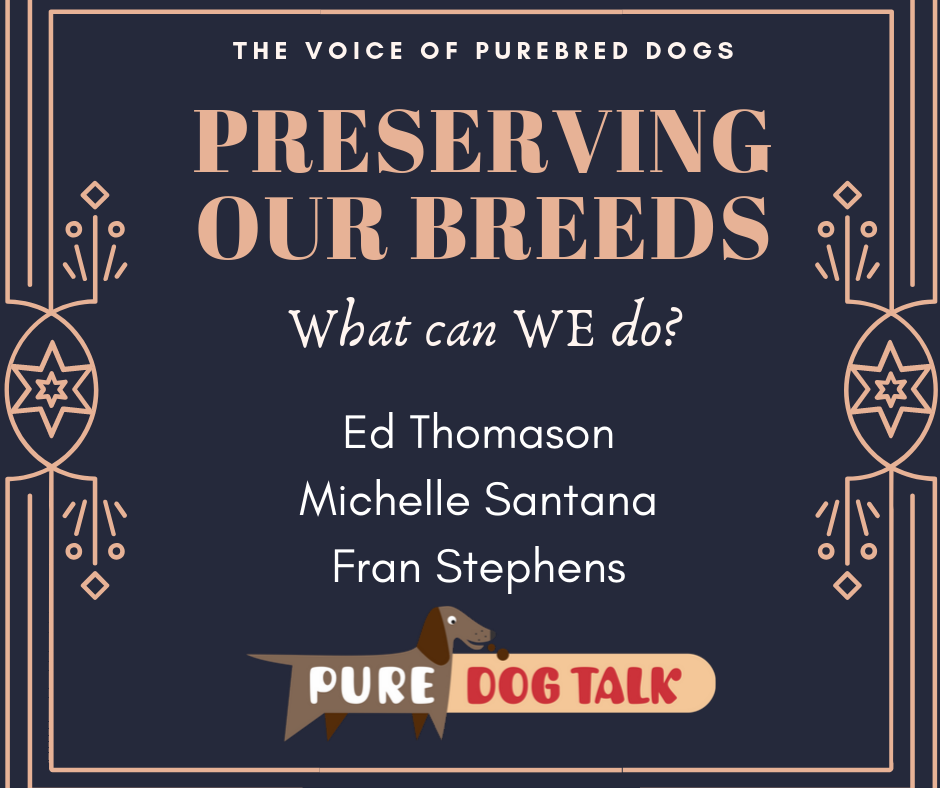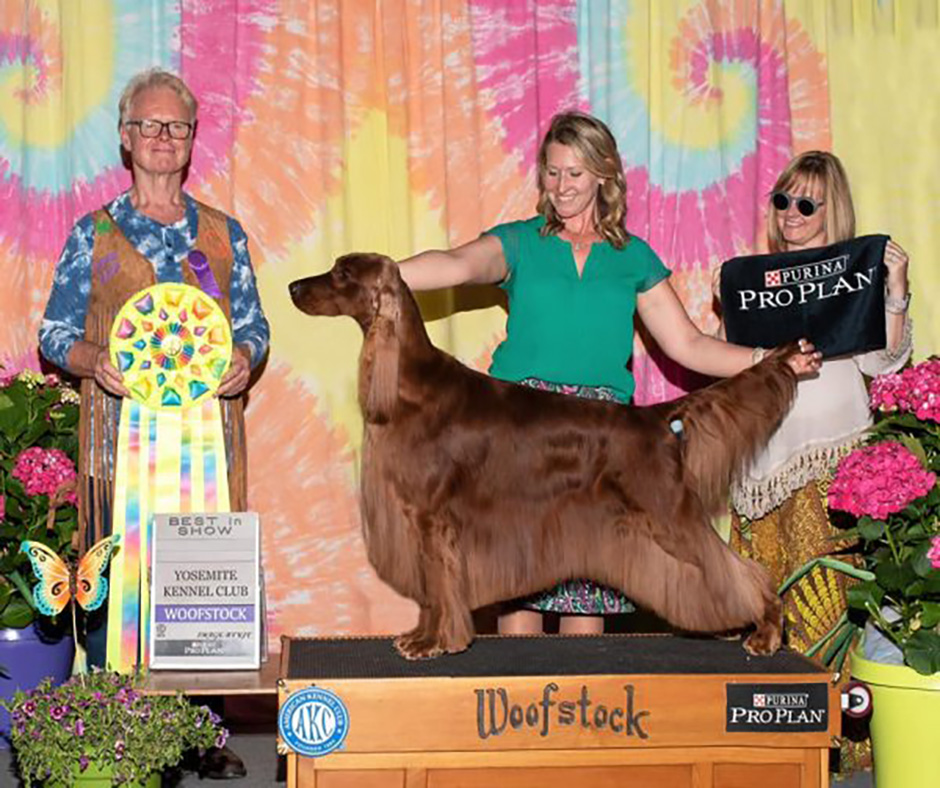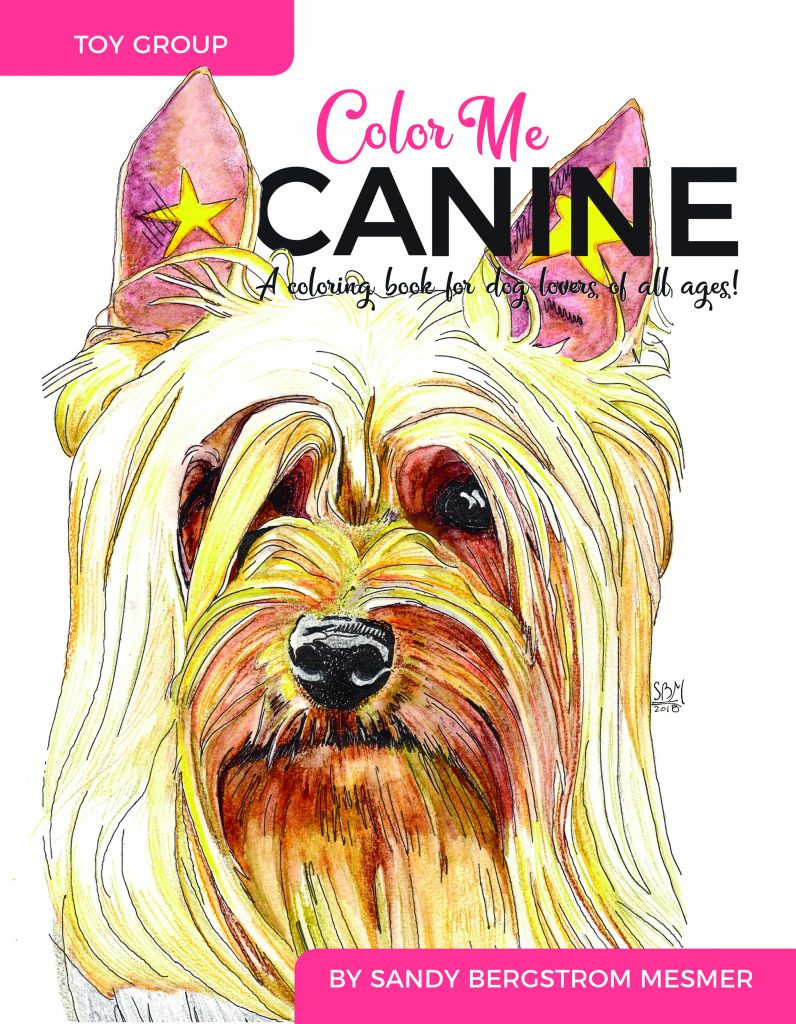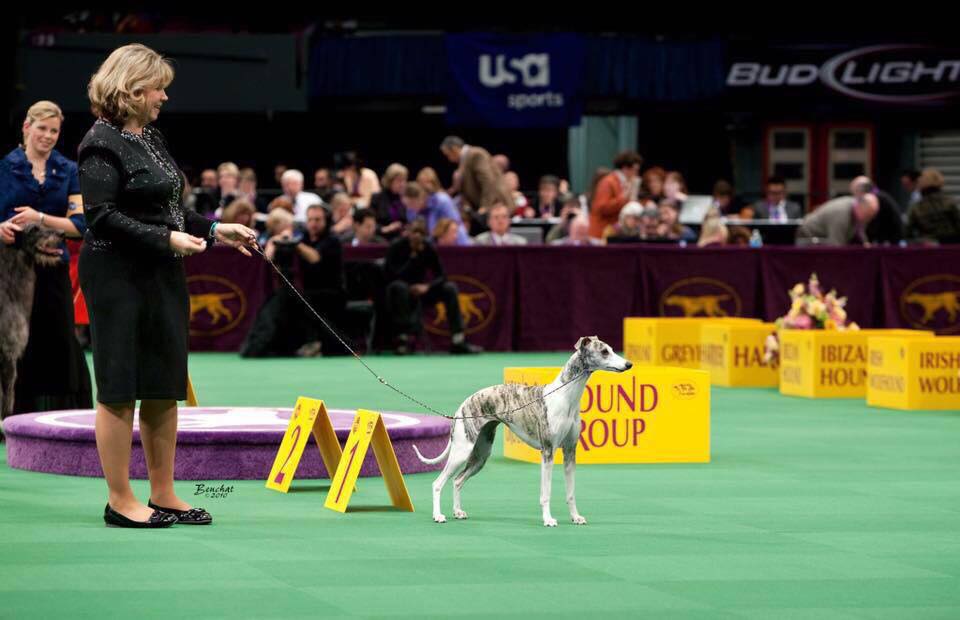636 – Study Shows Purebred Dogs Healthier Overall than Mixed Breeds
Study Shows Purebred Dogs Healthier Overall than Mixed Breeds
Dr. Kiersten Forsyth, DVM cardiology resident at Purdue and lead author of the recent paper from the Dog Aging Project discussing findings on health in our canine companions, joins host Laura Reeves with the details, which are not necessarily the same as what you might have heard.
“The Dog Aging Project is this really cool community science project,” Forsyth said. “Essentially, there are some researchers that are involved at a few different universities, but the main people that are involved in this project are the dog owners themselves. People can nominate their dog to participate.
“It is a longitudinal observational study, which basically means as a pet owner, once a year you fill out this really big survey that tells all about your dog, what their history is as far as their health, but also where they live, what kinds of things they do, the environment they’re in. And that information for one dog might not tell us a lot, but when we have tens of thousands of dogs participating, we can pull a lot of information from this.
“And so once a year, you get to refill out this survey, and we can follow these dogs throughout their lifetime to see what changes, what they’re exposed to and our real goal is to learn more about all of these dogs in the U.S., but also what makes some dogs live longer than other dogs and can we get more information about aging in these dogs?
“For the specific research part that I was involved in, we were looking at all of the dogs who were enrolled in the study during the year of 2020. We had 27,541 dogs included. So, a huge number.
“Of those, about 50 percent of them were mixed breed dogs and 50 percent of them were purebred dogs. We tried to look at what the 25 most common or popular dog breeds were that made up the dog aging project pack at that point in time and then really focused on those top 25 breeds to then say, ‘okay for these specific breeds, what are the most common medical conditions that their owners are reporting their dog to have experienced in their lifetime’.
“So, for each breed, we came up with a list of their 10 most commonly reported conditions, and then we looked to compare how those changed between different breeds and between the mixed breed population and the purebred population to see is there really a difference in the amount of medical conditions that a dog gets if they’re a purebred dog versus being a mixed breed dog.
“When we looked at it, one of the things we were wondering was, do purebred dogs have more disease than mixed breed dogs? And we found, no, that’s not the case. In fact, it might even be slightly suggested into the opposite, ’cause we looked at, of all of these dogs, how many of them did not have any health conditions reported?
“These are our healthy dogs. Nothing has been reported to be wrong with them. And we found that 22 percent of the purebred dogs had no reported medical conditions. And just under 21 percent of the mixed breed dogs had no medical conditions. So, there was really a 1.6 percent difference between the two of them, which is not a huge difference, but it was actually statistically significant that the purebred dogs were actually more likely to have no owner-reported medical conditions than our mixed breed dogs.
“It’s really not more likely to have disease in your purebred dogs.
“Now, specific breeds may be more likely to have specific conditions. And that goes along with, you know, I do a lot of stuff with the heart. I know that if we think of degenerative valve disease, Cavaliers come to the top of your mind, or if you think of dilated cardiomyopathy, Dobermans come to the top of your mind. And we’re not saying that certain breeds aren’t more prone to very specific diseases or medical conditions, but as a whole, being purebred doesn’t show a higher reporting of medical conditions compared to mixed breed.
“It’s turning out that common things happened commonly, where even though we’re looking at these purebred dogs, where you might think they’re prone to very specific diseases or medical conditions, it still is things like dental disease, dog bites from other dogs. Those are still some of the things that are showing up frequently across breeds, not just with one specific breed.”
618 – Pro Tips on Changing the Conversation from Ian Lynch
Pro Tips on Changing the Conversation from Ian Lynch
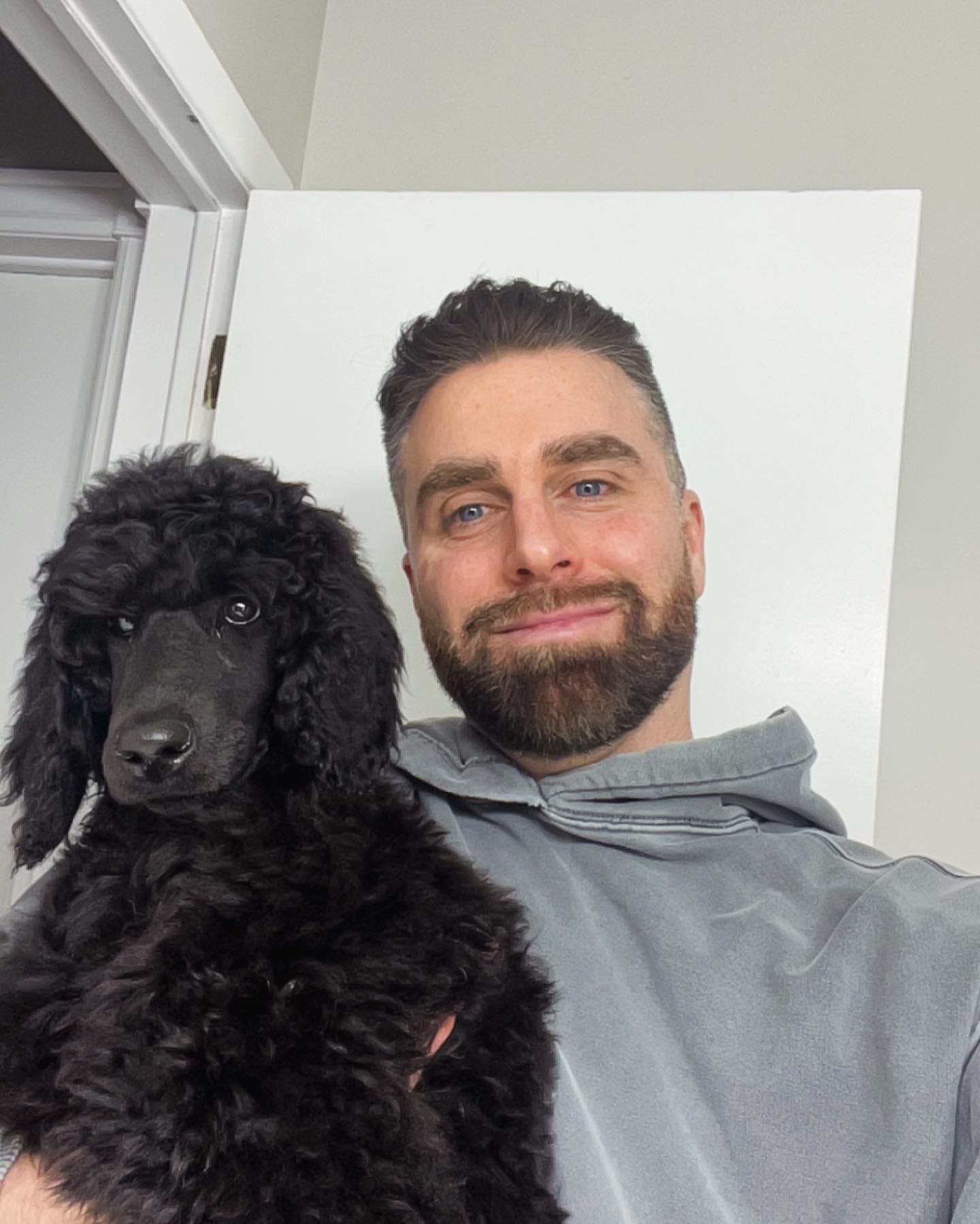
Ian Lynch with his newest Dawin Poodle, Portia.
Canadian Kennel Club spokesperson Ian Lynch joins host Laura Reeves to talk about changing the conversation on purebred dogs with the general public.
Lynch, a broadcaster in his day job, brings his passion for purebred dogs to the CKC as their public spokesman. He describes his lifelong obsession with the sport, obtaining the Dogs in Canada Annual magazine and creating a “vision board” with pages from the book taped to his wall.
His first dog as an adult was a Dawin standard poodle.
“I used to get “Dogs in Canada” annuals and I used to put all the pictures on my walls because I love these dogs. And I had a picture on my wall in 1995. It was an Allison Alexander in a red dress, holding Dawin High Falutin, who was the number one dog and has all these records to this day. His name was Lutin, I believe his call name. And it’s funny because as I get older, I realized that I was making a vision board because now I have a Dawin dog.
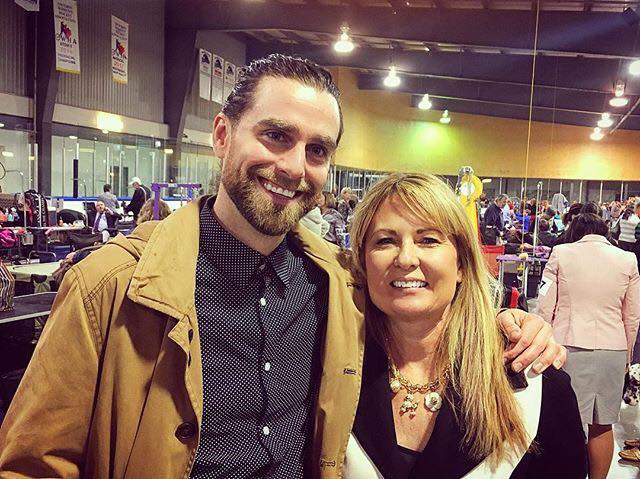
Ian Lynch and Allison Alexander, from vision board to friends.
“And I’m friends with Allison Alexander and she’s the greatest person alive. So, it’s so funny that like, you know, that you hear almost like manifestation stuff and I didn’t know what I was doing. But as a kid, I used to always have the picture of the Dawin dog and I used to tell my parents, ‘I’m gonna have a dog just like that one day.’
Don’t just talk. Listen!
Lynch recommends we just talk to people about dogs. And not just talk, listen also! On topics from training to doodles, listening to what people say gives you a chance to address their actual concerns and increase buy in to the information you do have to share.
“The easiest way for me, I think, to start talking to people about purebred dogs is to talk to everyone who has a dog.
“For example, there’s this lady on my street. She has this pitbull mix. And this dog was so reactive to my dogs all the time. I mean jumping in midair. And then, I noticed that from a distance, she taught the dog the look at me, you know, the treat out. And I stopped her and I said, ‘Sorry to bother you, I just want to congratulate you and let you know that I’ve noticed how good you’re doing with this dog and how far your dog has come.’ And she says to me, ‘Oh my God, thank you. I’ve always admired your dogs. What kind of dogs are they? Are they show dogs? Where are dog shows? Where can I learn more about these dogs?’ Simply talking to people about dogs.
“The way I think a lot of times, I’m lucky I have a radio show. I can infuse dogs. I got the mic. I got the platform. But we can all infuse dogs into our life at all times. When you have people over, my dogs are generally always well-groomed and bathed, basically weekly, but you want to make sure your dogs will look good if people are coming over.
“They smell good, they’re cuddly. I’m a big proponent of best self and make sure your dogs are their best self when people come over and, you know, people ask questions. Another thing we have to do is when we talk to people about dogs is we have to let people talk as well.
“We know a lot about dogs. We want to voice our opinions, but we have to let people talk.”
539 – Dr. Donald Sturz, Dog Show Philosopher & WKC BIS Judge
Dr. Donald Sturz, Dog Show Philosopher & WKC BIS Judge
 Dr. Donald Sturz, 2022 BIS judge at Westminster Kennel Club, joins host Laura Reeves to talk purebred dogs as history and art. And goosebumps at seven contenders in a unique and powerful lineup.
Dr. Donald Sturz, 2022 BIS judge at Westminster Kennel Club, joins host Laura Reeves to talk purebred dogs as history and art. And goosebumps at seven contenders in a unique and powerful lineup.
“From a historical perspective,” Sturz said, “I think it’s so important that we keep our focus on the history of particular breeds, not just from the point of view of the climate or where they came from, the terrain that they worked on or jobs that would to do, but also how the breed has evolved over time and understanding the difference between the evolution of a breed versus the changing of a breed.
“I think those are two very different things and so I think having a historical perspective, I was gonna say as a judge, but also as a breeder, I think that that informs your decisions, it informs your perception of the dogs that you’re looking at when you put them in that historical context of both where they originated, but what they were meant to do and how they’ve evolved over time.
Purebred dogs are history and they are art
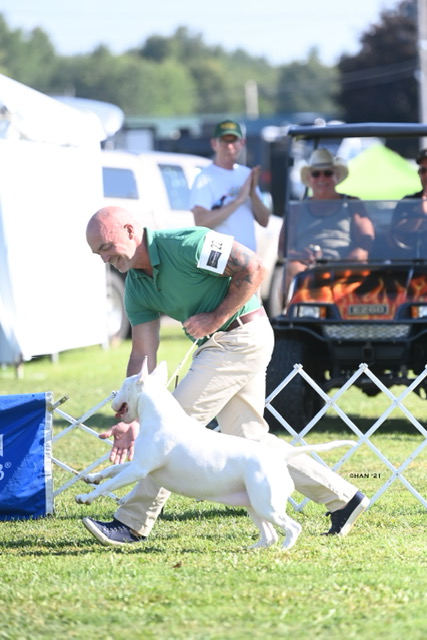 “When you talk about dogs as art, that really resonates with me, because that’s what it’s like to me when I go to a dog show. I look at dogs as I would look at art in a museum. I love when something moves me. You know how when you look at a beautiful piece of art, whether it’s a painting or sculpture or whatever, and you just have a visceral emotional reaction. I love when that happens for me with a dog. As a judge it doesn’t happen all the time, it doesn’t happen as frequently as one might like, but when it does happen, it’s kind of like the reinforcer.
“When you talk about dogs as art, that really resonates with me, because that’s what it’s like to me when I go to a dog show. I look at dogs as I would look at art in a museum. I love when something moves me. You know how when you look at a beautiful piece of art, whether it’s a painting or sculpture or whatever, and you just have a visceral emotional reaction. I love when that happens for me with a dog. As a judge it doesn’t happen all the time, it doesn’t happen as frequently as one might like, but when it does happen, it’s kind of like the reinforcer.
Patience is a virtue
“People have gotten so caught up in immediate gratification and looking for the outcome rather than the process. I think it’s important for us, especially in dogs, to kind of catch ourselves. If we find ourselves in that kind of moment, I’ll say wait a minute, slowdown skippy, you know there’s a bigger picture and a much longer story and you need to keep reminding yourself of that.
“I’m big on there being gray areas. I can allow for some stylistic differences on the continuum. But there’s a point, there’s a line where you get, that’s too much, that’s too far. It’s either too moderate or too extreme. I have a little wiggle room on both sides of that, so that’s how I would process kind of that global perspective piece.
“Being able to kind of see the forest for the trees and be able to, as a breeder, see how that dog can add to your journey as you pursue your vision of the breed. I think also being able to think in a more long-term way.
“I think the mistake, unfortunately, is people are like ‘oh, I’m gonna breed to this dog from wherever and I’m gonna bring in these qualities’ and then they have a litter and it’s like ‘oh I didn’t get what I wanted.’ You’re probably not gonna get what you want. You have to keep working and building and choosing and selecting. It’s a longer term process when one tries to do something like that. Does it sometimes click? Yeah, it sometimes happens. But I think that’s unusual. You have to kind of make a commitment to a few generations out, at least, to see what you were trying to get to.
Deciding in the moment
“What was so beautiful was that his breeder owner handler just very calmly stepped out there and guided him very deftly into a natural stance. He just planted his four feet perfectly without any the crossover thing … it was just boom boom boom. And then he just stood there and he literally stared at me. I’m like ‘Oh my God this is a really proud dog. This is a dog who’s giving me a dog standing over a lot of ground, a dog of power and strength. And then I sent him around and his gait was just flawless… Powerful and covering ground and elasticity. Head and tail carriage… and it was perfection to me. In that moment, it was like ‘there it is.’”
469 – Curating Living History Through Purebred Dogs
Curating Living History Through Purebred Dogs
“Purebred dogs are the only living museum of mankind’s journey on Earth.” Dr. Richard Meen
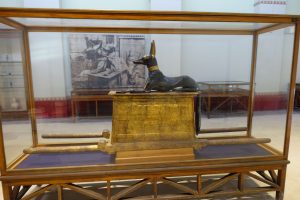
The dog god Anubis at the Egyptian Museum in Cairo. Photo by Lance Woodruff
Amanda Kelly, Fwaggle Toy Manchester Terriers in Canada, and host Laura Reeves take a deep dive on the history of purebred dogs. From the Victorian era, through the Industrial Revolution to today, we discuss how and why purebred dogs developed and how preservation breeders are curating living history through purebred dogs.
“I think that (Meen’s quote) is such a profound statement,” Kelly said. “Because it speaks to two things for me and there’s a tension between them. One is, it talks about the reasons why preservation is so important. We preserve our breeds because we love them, which is always going to be the number one reason that we do anything in the dog world. But there’s a broader purpose. There’s a broader service to society in preserving some of these breeds, particularly the very old ones. In that we are the ones who are maintaining this living museum.
“We are the ones who can show to a 10-year-old interested in ancient Egypt a dog that maybe looks exactly like a dog that sat next to Cleopatra… We can talk about the history of the country. And we can put a living artifact in front of people.
“I think the importance of artifacts and touch points that allow people to not just read above something, but to have an emotional and physical connection, is maybe a little bit more present for me when it comes to dogs, because I think that as a tool we are telling the story of our history on this Earth.
“Dogs have a really particular way of doing that because they speak not only to the things that they did for us, which in turn tells us about the way that we lived in different times and in different places in our history, they also allow us to actually feel a connection to that time you just can’t get through words on a page.
“What Doctor Meen said also speaks to the concept of evolution… all of these animals, whether they were developed in one part of the world or another part of the world, they all come from a place. We didn’t arrive in 2000 with 400 plus dog breeds that just magically rained down from on high. These were purposely developed animals in whatever area of the world and for whatever reason they were developed.
“They reflect the hand of humans who were the ones that were choosing them. Whether we’re talking about 500 years ago when they were being selected for behaviors that helped people actually live. I mean, people relied on these animals in order to be able to put food on the table.
“So, whether you’re talking about that or you’re talking about perhaps a companion dog that was developed by the Victorians because it was cute sitting on a pillow, it doesn’t make any difference why it was developed. But as part of that living museum. We are also reflecting that we have developed these animals through this concept that I talked about earlier, which is this idea of evolution with intent.”
“So 2021 is a whole lot different than 1821 or 1921. And it has different things that are important to the people in this society. And I think it is noteworthy that dogs, in some format or another, are still one of those things. They are one of the through lines of all of our history,” Laura noted.
“The concept of preservation breeding is a really important one,” Amanda added. “And thinking about what is it that we’re preserving and how we do that most effectively.
“But I think as groups of breeders we have to think more about where our breeds are going to be in 50 years and how we’re going to make sure that they’re still here. And that may require us to make hard choices. It may require us to make backup plans and to plan breedings that have alternate agendas other than producing your next best in show winner and those are hard things.
“If you’ve devoted your entire life to a breed. And the difference is that you can’t crop it or you can’t dock it. Or perhaps both, depending on your breed. Would you be willing to not only not have that breed in your life? But to actually see it disappear completely because of that.”
I don’t know the answer, but that is the question.
356 – Soul Dog: Investigative Journalist’s Poodle Journey
Soul Dog: Investigative Journalist’s Poodle Journey
Emmy award-winning investigative journalist Elena Mannes shares her story of the journey on which she embarked with her first dog, a Standard Poodle.
Soul Dog – A Journey into the Spiritual Life of Animals chronicles Mannes’ determined quest to harness her inner dog whisperer by learning to decipher the unspoken language present in every animal-human relationship.
“I brought Brio home… and it wasn’t really going according to plan. I really just thought I would get trainers and support and it wouldn’t really change my life to have a puppy,” Mannes said with a rueful chuckle.
“One time, I had him in Central Park. I had started to have him off leash… he would take off and not come back when I called. I was walking backward, screaming at him to come. All of the sudden, there was no ground under me… I stepped off the edge of the boat pond and fell in…. Brio eventually came back and just stared at me.”
Skeptic to believer
“I felt sort of desperate. I didn’t talk dog. I heard about animal communicators, but I was a real skeptic. I’m a TV journalist, I don’t like woowoo things.
“(Brio) changed me in so many ways as the years went by and the connection became so deep and really life changing for me,” Mannes said.
Mannes also addressed her decision to choose a purebred dog.
“I respect people who rescue, but in my situation at the time I really didn’t know enough. I had a sense of Standard Poodles that they were so smart. I was scared to death (of adding a dog to my life),” Mannes said, adding that the predictability of a purebred dog helped provide some comfort in this decision.
***
Elena Mannes is a multi-award-winning independent documentary director/writer/producer as well as an author. Her first book, The Power of Music: Pioneering Discoveries in the New Science of Song, is published by Walker Books/Bloomsbury USA (May 31, 2011).
Her work has appeared on both public and commercial television. Her honors include six national Emmys, a George Foster Peabody Award, two Directors Guild of America Awards, and nine Cine Golden Eagles.
Mannes developed and created a primetime PBS special, The Music Instinct: Science and Song,a co-production with WNET/Thirteen.
Mannes productions include the feature documentary film Amazing Grace with Bill Moyers (PBS) which won the Directors Guild Award as well as an Emmy for directing. For ABC, Mannes has produced a special with Diane Sawyer The Amazing Animal Mind, exploring the intelligence and emotions of dogs and other animals, as well as other ABC hours including Ground Zero with Peter Jennings which won an Emmy for best Historical Program.
Mannes has also produced and directed documentaries for CBS REPORTS and segments for 60 MINUTES and PRIME TIME LIVE (ABC).She worked with George Lucas to develop a television project incorporating documentary and dramatic sequences.
Mannes is a member of one of the first families of American music. Her grandparents founded the Mannes College of Music in New York City; and her great uncle, Walter Damrosch conducted the Metropolitan Opera and instigated the building of Carnegie Hall.
326 – Preserving Our Breeds. What can WE do? Discussion pt. 1
Preserving Our Breeds. What can WE do?
Pure Dog Talk’s host Laura Reeves moderates a Saturday Symposium panel discussion at the Rogue Valley Kennel Club show on the topic of “Preserving Our Breeds. What can WE do?” This is part one of the discussion. Part two will post next week.
Panelists are Ed Thomason, professional handler and noted breeder of American Staffordshire Terriers; Michelle Santana, AKC Breeder of the Year of Doberman Pinschers; and, Fran Stephens, Saint Bernard breeder-judge and AKC delegate for Puyallup Valley Dog Fanciers.
The panelists discuss a recent presentation (watch the entire presentation here) to the delegate body by Bill Shelton and Doug Johnson among other areas of interest in which purebred dog fanciers can promote their breeds and purebred dogs in general.
“Tell our story”
“We have fallen into hiding the fact that we’re breeders,” Thomason said.
“Don’t be afraid to say I breed purebred dogs because I’m want to know what I’m going to get,” Stephens said.
“We have allowed doodle breeders to become a fad,” Thomason said. “You go underground because you have more dogs than you’re supposed to. But on social media, you can promote your breed, your breeding program without telling where you live.
The pet puppy market is a billion dollar industry. Not saying leave here and be puppy mills. Market being manipulated by doodle breeders and rescues. We don’t share our stories. We have to or this ain’t going to be here.”
Education is critical
Santana discussed her goal of educating John Q Public.
“I picked a random pet Doberman social page,” Santana said. “Thousands of people who own a companion Doberman. They need education. Any time I come across an educational article I share to that page. Spay/neuter as an example. Just pick one site that doesn’t get a broad spectrum of education and share to that page. We need to spread this information to people not in our circle. We’re myopic. We can talk to ourselves all we want. But we need to reach out to these people outside our circle.”
Stephens noted that there is a vast market for dogs in this country that is largely being filled by doodle breeders and rescue imports.
“There are plenty of people wanting dogs,” Stephens said. “It’s how we reach them. How we talk to them.”
Join us next week for Part 2 of the discussion!!
317 – New Resources for Purebred Dog Enthusiasts
New Resources for Purebred Dog Enthusiasts
Host Laura Reeves visits with two exhibitors, Cara Ryckman and Michelle Conroy, who have each taken huge steps to create resources to benefit purebred dogs and their people. These three 50something women with passion, dedication and a desire to “*do* something, not just complain” encompass close to 120 years of combined experience in purebred dogs.
Both Ryckman and Conroy saw voids in the world of purebred dogs and created ingenious ways to fill them. Spending their own time and resources, they have created a brand new social media ap (Ryckman) and a certification of breeders/rescues for the general public’s use (Conroy).
Cara Ryckman – Social media gone to the dogs
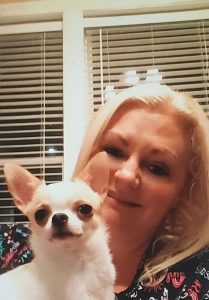
Cara Ryckman with her heart dog, GCH-S CH Hi-C Chanel Pearls and Ice at Terlingua.
“Dogs are our life!
This page and our site brought to you by Cara Ryckman of Terlingua Chihuahuas. I strive to create a friendly, positive, free social experience for people who love purebred dogs!
This site was created as a positive step in uniting the dog fancy and the general public in the hopes of preserving our heritage breeds for the future and bringing awareness to the predictability and dependability of purposefully-bred dogs and the fun of the purebred dog world. All are welcome!”
Michelle Conroy – Applying a lifetime of knowledge to certify breeders
“After more than 30 years working with animals, we have seen a lot and we haven’t always liked what we saw. Bad breeding practices and low-quality rescue operations are gaining ground. Many buyers and adopters hold negative views of breeders, and that’s largely due to a lack of quality control across the industry.
Here’s the truth: There are many quality breeders and fantastic rescues out there.
The problem is that it’s almost impossible for buyers and adopters to identify them. From mountains of misinformation to practically zero credible resources for finding ethical breeders or rescues, the public struggles to figure out what’s what.
We think it’s time for that to stop.”
https://breedercertification.org/
Listen now to hear their stories. Then check out these amazing new resources. Join Laura in her ongoing initiative to build up and showcase other innovative folks in the sport. You, too, can support MORE dog people helping dog people.
Listen to our previous episodes with OTHER great resources.
79 – Valerie Nunes-Atkinson Handling Seminars: Ready to Handle Like a Pro?
60 – National Purebred Dog Day: Susi Szeremy
91 – Dog Show Grooming, Poodle University, Online Handling and Allison Foley
201 – Exhibitor Education Courses Come Online | Pure Dog Talk
306 – Bill Shelton on Positive Messaging in Purebred Dogs
Bill Shelton on Positive Messaging in Purebred Dogs
Bill Shelton imparts his wisdom in part one of a three-part series from a wide-ranging conversation about positive messaging in purebred dogs.
People respond to positive messages, Shelton said, which will allow us to change perceptions within the general public. Words like preservation and purpose bred dogs change the paradigm of purebred that can have negative connotation.
“Look what shelters have done,” Shelton said. “They used to be known as the dog pound and mongrels. Look at it today, shelter, rescue, adoption. What fabulous words they use. We still use all these draconian words like kennel, breeders and purebred. They are accurate, but we need to move past them. Even the boarding industry has recognized the anthropomorphized words and have day care and stylists instead of kennel runs and groomers.”
We as breeders and exhibitors have the responsibility to take back the conversation and can’t rely exclusively on the American Kennel Club to do the work for us, Shelton noted.
“I don’t use the word responsible any more because 30 people have a different understanding of what that means,” Shelton said. “Purpose bred means that not only are the dogs bred for intellect and the way they look and predictability, they are bred intentionally by people who care about them.”
The term preservation breeder opens up the opportunity for conversation in the community, Shelton said.
“The paradigm has to change,” Shelton said. “We’ve focused so much on dog shows, that we began to believe that is the most important thing. What’s really important is that you and I as dog breeders supply the demand of happy, healthy family companions.”
Accountability
“As breeders, we are taking accountability,” Shelton said. “We are the ones taking responsibility from cradle to grave. The rescue started in the halls of the AKC and parent clubs. This is one of the reasons we find only five percent identifiable purebreds in shelters.”
We have to assimilate different perspectives rather than pushing against them, Shelton said. We need not to demean people but rather encourage them to understand what preservation breeders are doing, including producing quantitative predictability of health.
Learn more: 23 – Our Breeds are Endangered: Preservation Breeding-Bill Shelton
293 – Coloring the Future: Artist Creates Purebred Dog Designs
Coloring the Future: Artist Creates Purebred Dog Designs
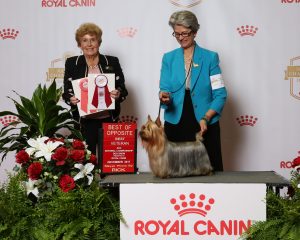
Sandy Mesmer and her Silky Terrier
Sandy Mesmer is an artist, Silky Terrier breeder and purebred dog enthusiast who has designed and published the first of a planned series of coloring books for each group.
“Color Me Canine: a Coloring Book for Dog Lovers of All Ages!” is Mesmer’s debut book in the series, this one covering the toy group.
Mesmer provides great insight about Silky Terriers in addition to her discussion of the coloring book, responsible breeders, taking back the conversation on purebred dogs and so much more.
“This book is a celebration of purebred dogs,” Mesmer said. “This is a viable alternative to the ‘adopt don’t shop’ message for children.”
“I am planning 7 more volumes of Color Me Canine, one for each AKC Group and Miscellaneous,” Mesmer added. “There are two areas that I could use help with:
- Part of the description I do for each breed is a crowd-sourced “In Three Words”. It can be helpful for someone to hear how the breed is very briefly described, it gives a snapshot of the breed’s temperament. You are very welcome to email me at sandy@smesmer.comwith your “In Three Words” for your breed. After all very breed is “great”. But is it independent? Sweet? Elegant? Feisty? All these adjectives can help a prospective buyer. As a matter of fact, as a thank you I’ll put you on our mailing list (if you’d like) so you can get the latest news about my coloring books.
- I have done over 160 headshots so far, these are the detailed drawings I use to model my coloring pages. They can be seen at the store (sandy-bergstrom-mesmer-designs.myshopify.com). I am working on the remaining 40+ as I work my way through each Group and am open to receiving photos of breeds I haven’t done yet. If I have done your breed, please feel free to check out your Headshot — I try hard to be an expert on each one but I know sometimes a detail slips through the cracks. As I can often easily correct such errors, I welcome experienced advice.”
Mesmer includes in the book, amongst a treasure trove of valuable information, this outstanding description.
What Makes a Responsible Pet Owner?
My friend and I got on the subject the other day. She volunteers at an animal shelter. We were having coffee. “I gotta tell you what happened.”
“Right before closing, I had this lady at my counter with a small black dog.
‘It’s not my fault,’ the lady told me. ‘This dog is obviously over-bred. I was promised that he wouldn’t shed, but he does – everywhere. And he pees everywhere too.
‘The kids begged and begged for a dog. I gave in but I told them, you’ll have to take care of him yourselves. And of course, they agreed. But did they? Of course not! It all got dumped on me. As usual. Never wanted the stupid thing in the first place.
‘Last night I got up to get a drink of water and stepped straight into a big pile of dog poop. That was the final straw.
‘I’m sure you understand I did all I could. The dog is obviously over-bred. It’s not my fault!”
My friend gave a deep sigh. “The woman so floored me, I couldn’t think of what to say. I came through the counter, took the dog’s leash and led him away. He’s a sweet little boy and no trouble at all. I took a long walk afterward.
“How can people get it so wrong?”
I shook my head. “No one ever tells people how to be a responsible pet owner. Instead they get their ears and eyeballs filled up with stories of Evil Breeders. Victimhood is so much simpler than to stand up and take responsibility.
“It’s way too easy to put a solitary bulls-eye on all breeders as the blanket cause of shelters full of abandoned animals. A good dog breeder is part of the solution, but so is a responsible pet owner.
“The popular press is curiously silent about this. It is loud about titillatingly horrific videos of stomach-turning breeding facilities, and we hear a lot these days about “over-bred” problem dogs.
“But what about the other side of the coin?”
I thought about our conversation over the next several days. What makes a responsible pet owner? I figured there were ten things to watch out for.
- A responsible pet owner is not in a rush to get a She knows that she is purchasing a companion who will be with her for the next 15 years. She does not try to get a dog for under the Christmas tree or for a birthday.
- A responsible pet owner never gets a dog just “for the kids”. She knows that at least one adult household member must be willing to be fully responsible for the
- Unless she is a responsible breeder, a responsible pet owner does not She never wants to “just have one litter” so the kids can see “the miracle of birth”.
- A responsible pet owner realizes that even with busy modern lifestyles, dogs need This is including regular walks. She knows that many canine behavior problems can be eliminated or at least mitigated with enough exercise.
- Whenever possible, she takes her dog with She knows that a happy dog is one with lots of stimulation and interaction.
- A responsible pet owner microchips her dog and has him registered with one of the lost and found She also has him licensed with her county.
- A responsible pet owner keeps up with her dog’s She checks him weekly for possible health issues and makes sure her dog gets regular wellness exams.
- A responsible pet owner trains her This can be in formal classes or from a book, but dogs love to learn; they become more sociable and excellent companions through training. If her dog has behavior problems, she is persistent in looking for help and answers and keeps going until she finds workable answers. She also realizes that if there is a persistent problem, most likely there is something that she is doing that is perpetuating the problem.
- A responsible pet owner continues to educate She keeps on learning about her breed, possible health issues and the latest in training protocols.
- A responsible pet owner knows that once she has made the original commitment, her dog is her responsibility for Like a child or a marriage, there are no give backs because the dog is no longer convenient or entertaining. It’s in sickness or in health, ’til death do us part.
I gave my friend the list. “What do you think?”
“I’m framing this and putting this on the wall behind the counter.”
“That would be great. If it helps just one dog have a better, more responsible owner, it’ll be worth it.”
I’ve heard about the excellent responsible pet ownership program they have in Calgary, Canada. Maybe that’s why that city has the lowest kill rate (how many pets are put to sleep) in North America.
Maybe this is the missing puzzle piece in the problem of pets in shelters. Just maybe.
290 — Commentary: Fun Matches and Rethinking Rankings
Commentary: Fun Matches and Rethinking Rankings
Host Laura Reeves sat down with Lori Wilson-Paust to talk about fun matches, the need for “picnics in the park” that build the sport from the ground up and rethinking the “rankings rat race.”
For more thoughts on the topic, following is a reprint of an article Laura wrote for the online magazine Best in Show Daily a few years ago. Sadly just as applicable today…
As the Wheels Turn
by Laura Reeves, PHA
Rankings Remix
The latest statistics, for the first half of 2015, hit the airwaves today. Everyone from junior handlers to owner handlers to the top dog in the country of any breed is ranked in every possible format.
While I acknowledge the appeal, and certainly am not immune to bragging on the success of the dogs I show, I wonder, along with almost everyone I know, if this system is not a huge part of the problem we are all complaining about in modern AKC Conformation dog shows.
Simultaneously, I received an unexpected gifty from AKC in the form of a Grand Champion certificate for a dog I own. I am terrible about counting GCH points and frankly tell every one of my clients to count themselves or simply wait until the certificate shows up.
At this point in my life, I have a giant file full of certificates I never even look at. So what was special about this one? First, I wasn’t expecting it, even remotely. Second, the dog was shown a *total* of 16 shows (days, not weekends) since finishing his championship in January. He was shown three weekends to earn his championship, all at specialties or supported entries. He also earned a group placement at a large show in January and is still ranked, from that one day, #11 in all-breed competition.
This story isn’t about bragging, but rather about percentages. This dog was shown eight weekends out of 56 (May 2014 – June 2015). As this is a breed and group well outside my norm, in many cases he was entered under judges I had never even heard of, never mind shown to previously. Of the 28 entries, he won points toward his Championship or Grand Championship roughly 50 percent of the time.
Which begs the question — if a dog wins 50 percent of 30 shows, should it be ranked higher than a dog with 20 or 30 wins which was entered in 100 shows (ie only 20 or 30 percent winning average).
This also applies to the concept of stud dog/brood bitch success. For example: Brood Bitch A (an actual case) was successfully bred once. She produced, out of 12 live puppies, a BIS/BISS/DC/AFC/JH/CD (a breed first), a Ch/MH/RN/TD/MX/MXJ, a BISS/CH/group placer and a CH/regional specialty WD/BOW. This bitch, in her breed club, is not eligible for a Register of Merit award as there were not seven titled get, even though the allotted point total is more than sufficient. Brood Bitch B (fictional), who would theoretically qualify for the ROM, is bred four times, makes 32 live puppies, of which six become champions (perhaps by beating four or more of their littermates), three with a Junior Hunter, one with a Companion Dog and one Novice Agility titled dog. So, seven titled get out of 32 live puppies is a 22 percent “success” rate, versus four out of 12 which is 33 percent.
While perhaps a bit belabored, you begin to see the point. Statistics are great fun. Who doesn’t want to be #1? Are they particularly useful in identifying the “best” or most successful dogs being shown or bred? Maybe not so much.
As with anything else, take your month-end stats reports with a grain of salt. Better yet, perhaps AKC or even one of the dog sport mags could invest in the computer programming skills required to create a “percentage-shown” ranking system, which addresses so many of the issues in today’s fancy. All it takes is registration numbers and a good algorithm. The basic information necessary is already utilized in the existing rankings.
In such a system, successful owner-handlers with a really great dog who can only make it to a couple shows a month could well rank higher than dogs campaigned week in and week out who win less consistently. This at least attempts to provide for the long sought level playing field in the rankings race (which, sadly, is never going away). This novel concept could lead to increased satisfaction and overall improved entry numbers and fancier retention that does nothing but benefit the sport as a whole.
Living the dream out here on the left coast, to be sure, but still, something for the “powers that be” to ponder.
As always, this is JMHO.

